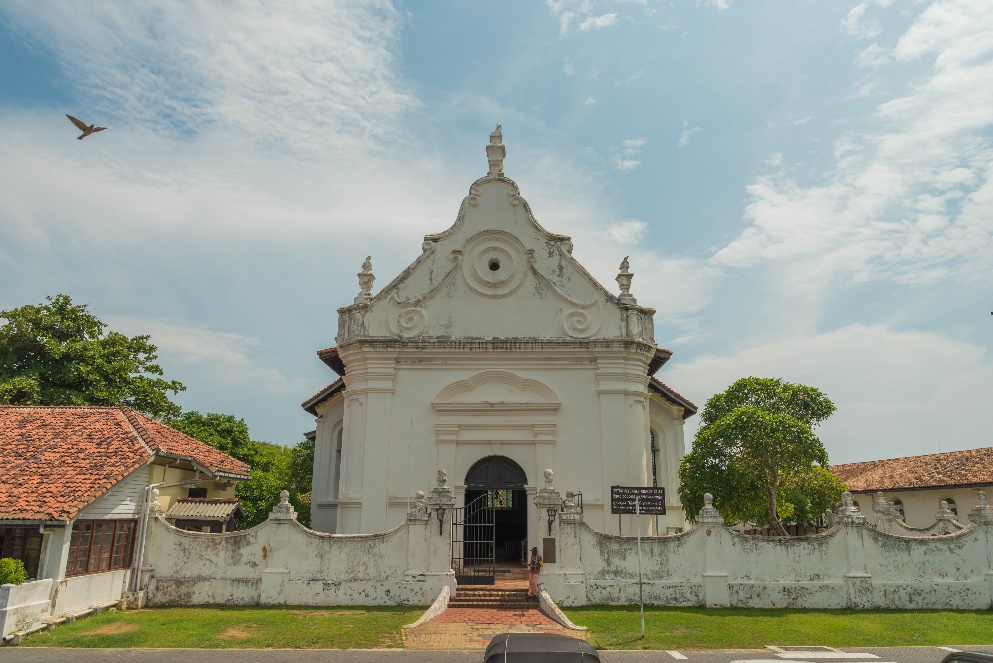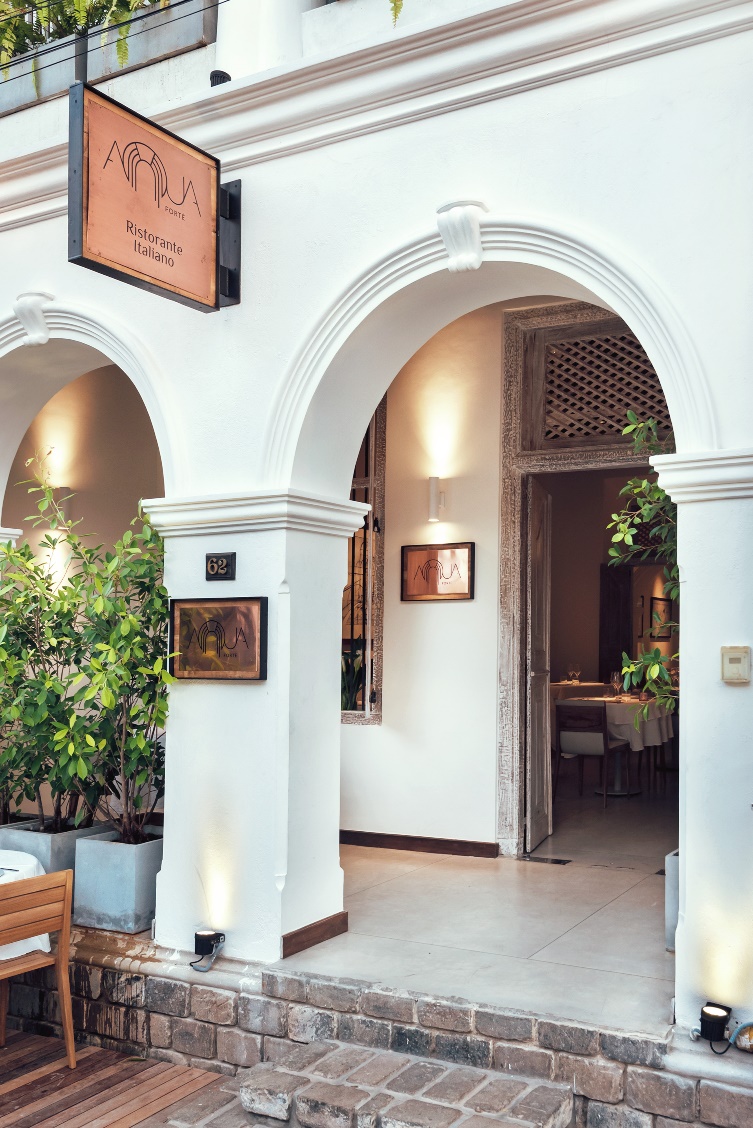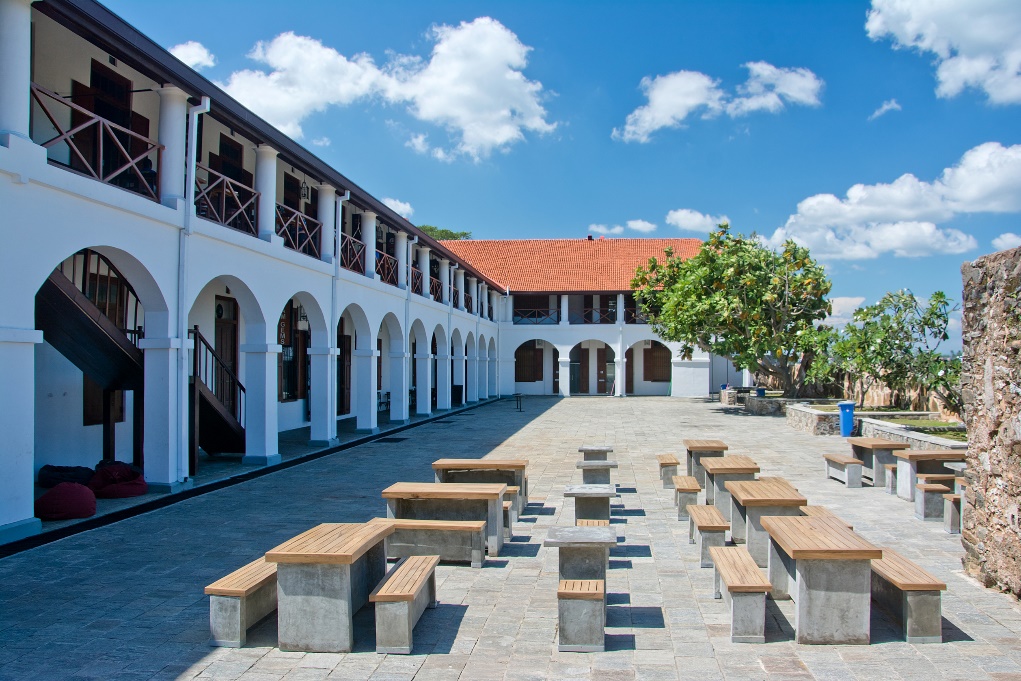


Many who wander around the southern coastal town is often mesmerised with the intriguing history that surrounds it. The Galle Fort is one of the more exemplary remnants of the old European empires in South Asia, during the 16th and 17th centuries. One such element that has caught many travellers’ attention is the architecture that banks the cobblestone streets. Although built predominantly by the Dutch, the basic inspiration stems from the works of renowned Italian renaissance architect Andrea Palladio. As you stroll through the cobblestoned streets exploring the numerous things to do in Galle, discover these 5 places that unveil Italian Renaissance Architecture in the Galle Fort.

Do you want to know more about authentic Italian cuisine, best wine pairings and secret offers at AQUA Forte? Subscribe to our weekly newsletter and stay up to-date!
Andrea Palladio’s style resonated throughout Europe during the time. Beginning with the entrance, one can easily identify his grandiose style with its enormous arched doorway, and symmetrical pediment, which was a trademark of the Italian architect. His inspiration came from the ancient Greek and Roman architectural order, known as the Doric Order.
The Groote Kerk, otherwise known as the Dutch Reformed Church, is a unique monument that signifies the Protestant faith brought by the Dutch colonisers in the 17th century and has quite a strong resonance of Palladian architecture. Although not showing the typical Doric style espoused by Palladio, it is possible to identify that the side walls of the church that meet the pediment has a stark resemblance of the Doric Order.
Tucked away on Church Street, lies the Galle National Museum that is a testament to the culture, heritage and history of the country, as it contains relics of great importance. One the main things to do in Galle, Sri Lanka is to explore the quiet hallways of the museum. One exhibit that is often ignored by many patrons is the very architecture that sports some of Andrea Palladio’s revivalist styles. The pillars at the entrance resemble that of the ancient Greek buildings, which was a signature of Palladio’s design. In fact, it was the very Parthenon of Greece that inspired him to incorporate it into his designs.

Did you know that our restaurant is a vestige that harks back to the days of Italian renaissance? The large archways that have a Romanesque touch is a pioneering feature of Andrea Palladio that not only makes for a classical look, but also is known to be a practical implementation, as the design is known to be sturdier, distributing the weight of the building evenly, without taking much space. The lintels and the balcony with the large pillars are also another feature that was made famous by the styles of Andrea Palladio, especially that of the façade of the Basilica Palladiana, giving you a truly Italian experience. Dine at our Italian restaurant in Galle Fort for a truly Italian experience; it’ll be one of the most memorable things to do in Galle, especially if you’re visiting the island for the first time.
Do you want to know more about authentic Italian cuisine, best wine pairings and secret offers at AQUA Forte? Subscribe to our weekly newsletter and stay up to-date!
The Galle High Court complex is one of the few in the fort that does not belong to the Dutch colonists, but instead by the British, during their occupation in 1900s. However, it is a textbook example of Andrea Palladio’s more recent pieces of architecture. From the arches and the symmetry of the building, to the typical pediments and the cornices, the architecture of the High Court reflects styles from the Italian renaissance and is quite similar to the Palladio’s Palazzo Thiene in Vicenza.

Although recently refurbished to make it look more suitable to modern times, the façade of the Dutch Hospital Shopping Precinct, which was once an actual hospital, is a strong reminder of how innovative and practical Italian architecture was. The noticeable pillars, the corridors, and the balconies are all inspired by those designed by Palladio, which allowed for a well-ventilated building in which entry, exit, and movement within the complex was easy.
After exploring these exemplary monuments, you are most certain to wander how these styles reverberated throughout Europe during the time, and why not do it over an authentic Italian dining experience in the heart of the Galle Fort? Reserve you table now at AQUA Forte.
Do you want to know more about authentic Italian cuisine, best wine pairings and secret offers at AQUA Forte? Subscribe to our weekly newsletter and stay up to-date!